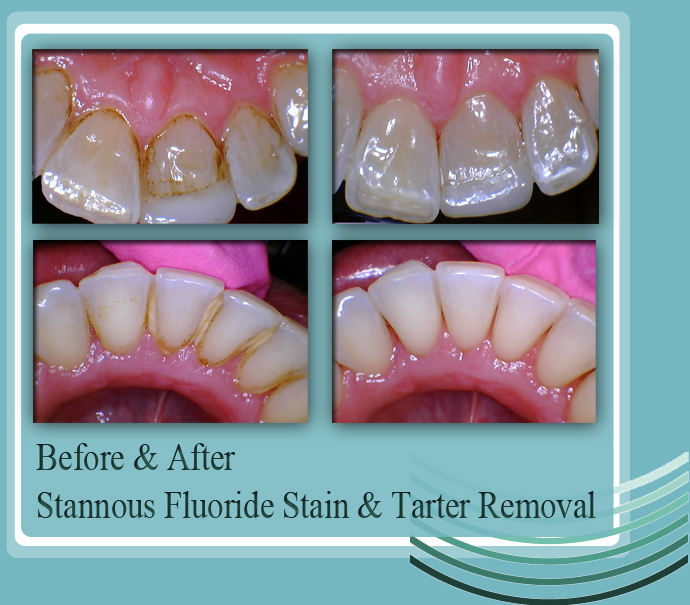By Lisa Dennis, RDH
Most people are aware that some foods and beverages can stain teeth. But did you know that certain toothpaste and mouthwash products can, as well? It may seem counterintuitive, yet dentists and hygienists have found that oral care products containing stannous fluoride and cetylpyridinium chloride are causing brown stains that can be difficult to remove.
You may be surprised to learn that some of the most popular brands and formulas are the biggest culprits. Topping the list of offenders are Crest Pro-Health toothpaste and mouth rinse. This toothpaste formula contains stannous fluoride, and the mouth rinse contains cetylpyridinium chloride – and both can cause tooth discoloration. Other popular products also are formulated with these compounds.
Staining occurs as a result of the product dislodging bacteria, which then can cling to your teeth and turn into brown spots. The spots resemble coffee stains that become more apparent approximately five weeks after usage begins. Check out the before cleaning and after cleaning photos to see the difference that can be made by a hygienist who’s skilled at removing stannous fluoride and cetylpyridinium chloride stains.
Some people are more susceptible than others to this type of staining. However the best way to avoid a potential problem is carefully read the labels on your oral care products. Make sure to select toothpastes that do not contain stannous fluoride and mouth rinses without cetylpyridinium chloride.
Note: My recommendations for oral care products without stannous fluoride and cetylpyridinium chloride include Sensodyne Fresh Mint formula toothpaste and Sensodyne Pronamel products; basic cavity protection formulas of Crest or Colgate toothpastes; Closys products; and Act Anticavity fluoride rinse.






